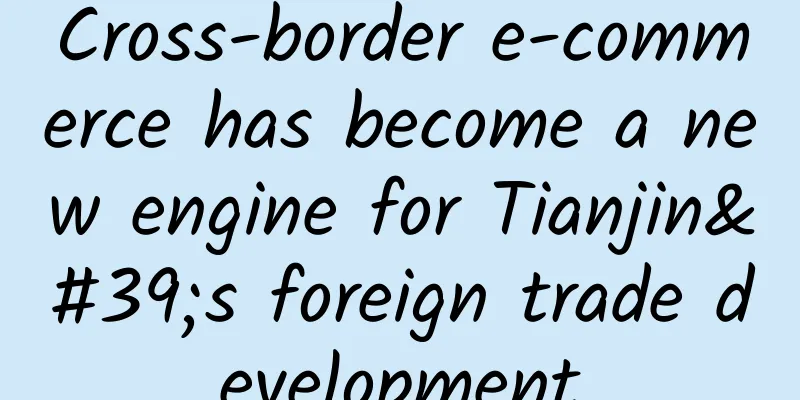Brief Introduction of Paris Spring Department Store (Factory Inspection) Group

|
Brief Introduction of Printemps Department Store Group The department store started its business in the birthplace of fashion, Paris, France, in the spring of 1865 and has a history of over a hundred years. Printemps Department Store leads the world trend and the fashion trend of department stores. It breaks through the outdated management mode of "promoting commodity sales" in the past, gets rid of the crowded and chaotic passive hawking mode, and completely improves the dark and dull shopping space. On the premise of truly worshipping customers as God, the mall pays special attention to humanized management from the standpoint and point of view of consumers, and vigorously promotes spiritual civilization to create a brand-new business culture. Comfortable and elegant cafes are specially set up on the second and fifth floors, and there are romantic European-style cafes. The consumption and shopping activities are upgraded from a simple buying and selling industry to an activity that makes the whole family happy, full of interest, enjoys leisure, enriches life, condenses emotions, and is full of intellect and sensibility. Printemps Department Store (China) Co., Ltd. was established in 1996. The sponsors at that time included Shanghai Printemps Department Store, French Printemps Department Store, and Ports International Group. Printemps Department Store (China) Co., Ltd. has now developed into a large department store group with international capital background. Its main shareholders include Ports International Group (its parent company is a Canadian listed company, and its Asian enterprise is a Hong Kong listed company with a market value of more than HK$7.008 billion. Ports Group has been rated as one of the world's top ten small companies by Forbes magazine (referring to companies with annual sales of less than US$1 billion). In October 2006, the company was rated as one of the strongest 200 companies in Asia, and the company's chairman Chen Qitai was featured on the cover of Forbes.), Citibank (the largest commercial bank in the United States), and 3i (the oldest investment bank in British history and one of the constituent stocks of the Financial Times Index). Printemps is a high-end and fashionable department store chain with a total business area of more than 100,000 square meters. Its target market is high-income customers in China. In this huge and rapidly expanding Chinese market, Printemps focuses on the consumption needs of high-income customers and has established an attractive consumption environment in its main operating outlets. Printemps plans to expand its business outlets nationwide and become China's leading department store management company. Printemps has rich and outstanding experience in operating world-class high-end brands. Printemps has maintained a good cooperative relationship with world-class high-end brands for a long time. The senior management team members of Printemps have all been trained in North America, have international retail knowledge, and have rich experience in operating high-end department stores. Printemps has a good reputation in the Chinese retail industry and is known as a reliable financial partner and excellent operator. The senior management team of Printemps has more than 10 years of retail experience in the Chinese market. On February 9, 2007, the former "Hisense Plaza" will be officially renamed "Printemps Plaza". After the name change is completed, "Printemps Department Store" will use its advanced foreign management experience and the advantages of Chinese chain department stores, together with its suppliers, to bring better, broader, more convenient and high-quality services and enjoyment to the people of Qingdao! If the luxury goods market is indeed lucrative, even the largest luxury retailer in France, Printemps Group, will make a major strategic adjustment and sell its Printemps chain of shopping malls to Italy's Borletti Group for 1.075 billion euros. The purpose is to highlight its characteristics and advantages and open more Gucci stores around the world specializing in luxury goods. French fashion and retail giant Pinault Printemps Redoute (PPR) recently sold its Printemps department store chain through a tender, with a total of 17 stores, including a flagship store in Paris. The news attracted global attention, and amid various speculations, the buyer finally surfaced at the end of June: Maurizio Borletti, chairman of the board and major shareholder of the famous Italian department store La Rinascente, together with RREEF under Deutsche Bank, stood out from the various buyers speculated by the outside world and became the new owner of the century-old Printemps department store with a bid of 1.075 billion euros. Since Printemps was controlled by the Paris Printemps Group in 1992, after more than a decade of careful cultivation, it has firmly occupied the leading position in French department stores. Its merchandise covers high-end luxury goods and mass clothing, beauty, entertainment, home furnishings and other aspects, and it enjoys a high reputation. The history of the Paris flagship store on Haussmann Street can even be traced back to more than 100 years ago. This building in the late 19th and early 20th centuries has become a classic street corner in Paris, and the interior decoration is magnificent. Today, Printemps Department Store has become a symbol of the fashion industry to some extent, and even leads the global fashion trend, and tourists from all over the world flock to it. The Paris Printemps Group also invests about 30 million euros each year in various marketing methods to attract more young people. Printemps has made an indelible contribution to the development of the Paris Printemps Group. It was on the basis of Printemps that the Paris Printemps business empire was established. At present, Paris Printemps has assets of more than 30 billion euros, ranking among the top 500 companies in the Fortune Global 500. Because of this relationship, the Paris Printemps Group naturally has deep feelings for Printemps Department Store and it is not easy to let it go, and it is also very cautious in selecting its new owner. According to the information obtained by Successful Marketing, the reason why the Paris Printemps Group chose the Borletti Group is that the Borletti Group and RREEF promised that after they acquired Printemps Department Store, they would focus on investing in it, and provide solid guarantees in social status, economic operations and financial and financial aspects, making it one of the leading department stores in Europe. In addition, the Borletti Group also allowed Printemps Department Store to use the original company name unchanged and retain its French characteristics. Although Printemps is well-known and has many buyers, there are hidden concerns under the prosperity. In 2005, Printemps' turnover accounted for only 752 million euros of the total turnover of 17.8 billion euros of the Paris Printemps Group. Alice Lhabouz, a fund manager of Paris Meeschaert, also poured cold water on the business, saying that Printemps' performance growth was mediocre and had even gradually become the least profitable business of the Paris Printemps Group. Looking at the development of other traditional department stores, the trend is also worrying. Last year, PPR's competitor, the luxury giant LVMH Group, temporarily closed its famous Samaritaine department store under the pretext of security inspection and maintenance, and its department store on the banks of the Seine in France has been in a loss-making state for many years. In stark contrast to the bleak situation in department stores, the luxury goods sector is doing very well. According to a 2005 report by LVMH, the group's sales in 2005 increased by 11% compared to 2004, reaching $16.6 billion; and its profit growth was even more astonishing, rising by 21% to $1.7 billion. The PPR Group, which owns Gucci, Yves St. Laurent and other high-end luxury brands, showed in its 2005 annual report that the luxury goods sales of the Paris Spring Group had increased by 16% to $3.6 billion; and its profit growth was even higher, reaching 30%. Faced with this situation, the Paris Printemps Group decisively adjusted its strategy, divested Printemps department store, and focused more on the more profitable high-end luxury goods industry. According to the latest news from Le Monde, after selling Printemps department store, the Paris Printemps Group will focus on the luxury goods agency business, including famous brands such as Gucci and Yves Saint Laurent. Francois-Henri Pinault, chairman and CEO of the PPR Group, said after signing a statement with Borletti and RREEF that they will focus their energy on two core areas: luxury goods and retail, which will ensure the unique positioning and development direction of the Paris Printemps Group. It is a pity to abandon Printemps department store, but he believes that this move will allow the group to maintain an above-average growth rate and obtain more lucrative profit returns in the market. At present, more and more wealthy people are enthusiastically pursuing luxury goods, making the luxury market hot. With the intensification of globalization and the increase in exchanges between countries, the group of luxury consumers is no longer limited to Western developed countries, but has expanded to the world. "Globalization means that such an economic structure can breed more wealthy people. They are keen on making expensive and high-value consumption all over the world, especially ordering these traditional luxury brands, which has become the first choice for these world-class consumer upstarts." Simon Raggett (a famous British luxury analyst) said. In the surging global wave of luxury consumption, PPR Group is confident that it can get a bigger share, largely because of its Gucci brand. Since 1999, the Paris Spring Group has announced its entry into the luxury goods industry and competed with the world's number one luxury apparel group LVMH Group for the acquisition of the Gucci Group. The Paris Spring Group's acquisition of Gucci's equity began in 2001 and was completed in 2004. It eventually acquired 42% of the Gucci Group's shares and became the largest shareholder. In addition, in the same year, the Gucci Group acquired several major luxury brands such as YSL (Yves Saint Laurent) and Sanofi Beauté. In PPR's luxury business, the core Gucci brand accounts for nearly 60% of its total luxury sales. After taking over Gucci, PPR repositioned it and spent a lot of effort on advertising to inject fresh vitality into tradition. In the past, old luxury brands like Gucci appeared conservative, solemn and even a little boring. Now PPR has given Gucci more space. In order to attract young buyers, while retaining the traditional section, Gucci has added new elements of youth, fashion and personality from product design to publicity and advertising, leading the fashion industry and opening up new markets, making the Gucci Group a super fashion kingdom. Gucci has achieved great success and is currently the world's third largest luxury group. In 1998, it was selected as the European Company of the Year from 4,000 companies by the European Business Press Federation (UPEFE). The large-scale Gucci Group now includes many internationally renowned brands such as Gucci, Bottega Veneta, Yves Saint Laurent, YSL Beauté, Balenciaga, Boucheron, Sergio Rossi, BEDAT & CO, Alexander McQueen and Stella McCartney. Product categories include clothing, accessories, jewelry, leather goods, watches, cosmetics, perfumes, etc. Gucci has become synonymous with "new modernism". In 2003, Gucci's annual sales reached US$2.4 billion (2.149 billion euros), and Gucci ranked 52nd on the list of "the world's most valuable brands" selected by Business Week. |
<<: Monoprix (factory inspection): retail adopts Gallery
>>: Introduction to Auchan factory inspection in France
Recommend
Hangzhou SEDEX factory inspection system and query of factory inspection results
SEDEX is a data platform built on the standards o...
The relationship between customer factory inspection and WRAP certification
Factory inspection is simply that the business it...
How about Jitong International Freight? What services does Jitong International Freight provide?
How about Jitong International Freight? JiTong In...
EUROPEAN FLAX Certification Purpose and Scope of Application
1. Purpose and scope of application This procedur...
What is Xmind? What are the characteristics and advantages of Xmind?
The mind mapping software xmind is a very excelle...
SA8000 System Certification Crisis Countermeasures
Countermeasure 1: Win the market by product quali...
How about Haofang Group? What businesses does Haofang Group have?
How about Haofang Group? Founded in 2006, Haofang...
What is Baijuhui? What courses does Baijuhui offer?
Guangdong Baijuhui Enterprise Management Consulti...
Primart Factory Inspection Quality Inspection Tool---Metal Management (IV)
Primark Factory Inspection -Quality-Tool---Metal ...
Timberland factory inspection violation examples
Timberland factory inspection violation examples 1...
ISO9000 family system certification standards
What are the ISO9000 family of system certificati...
What are the functions of BigTracker? Introduction to BigTracker
BigTracker Product Selection Cool Introduction Bi...
SaaS – Software as a Service (SaaS)
What is SaaS? SaaS is the abbreviation of Softwar...
The most complete definition of CmiA is here!
CmiA Cotton Cotton produced by CMIA-certified cot...
Urgent notice: Please check the contract remittance information carefully to avoid being deceived
Urgent Notice: Some scammers are trying to defrau...









